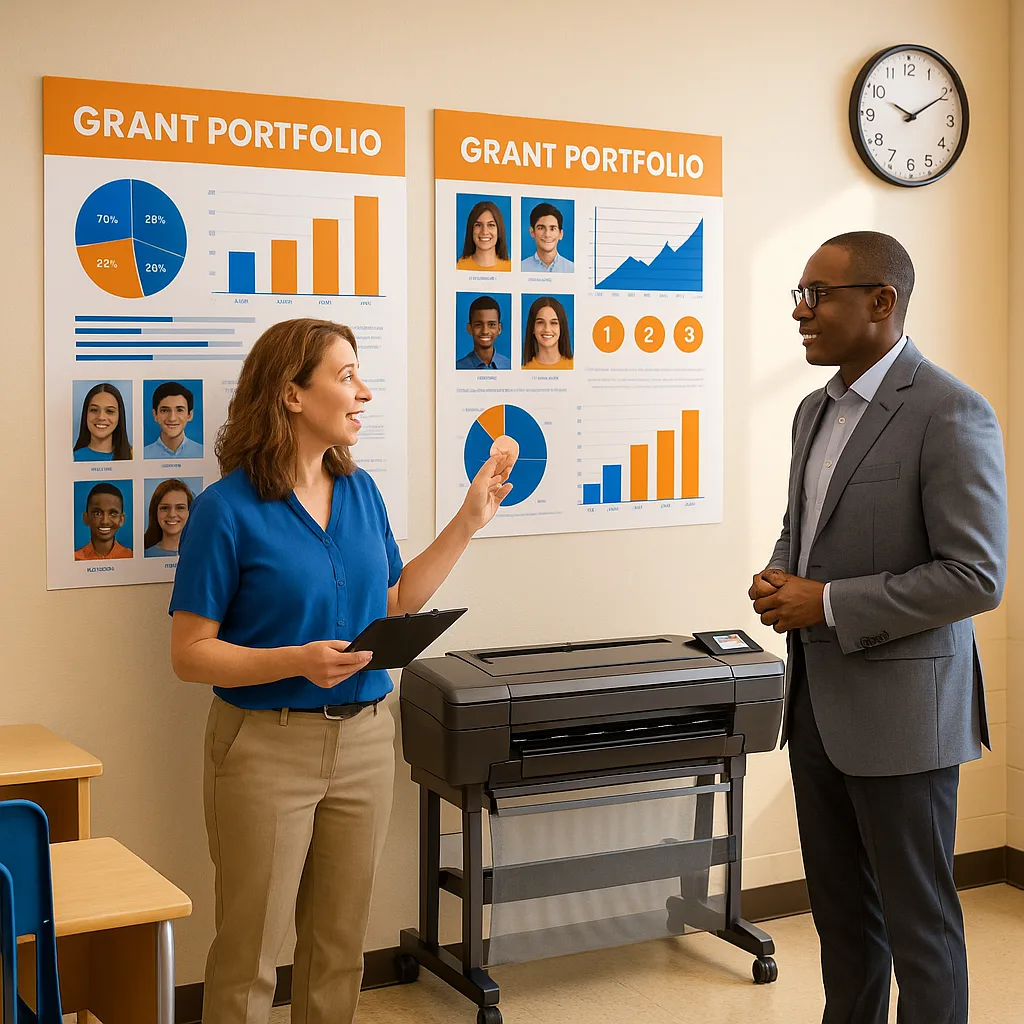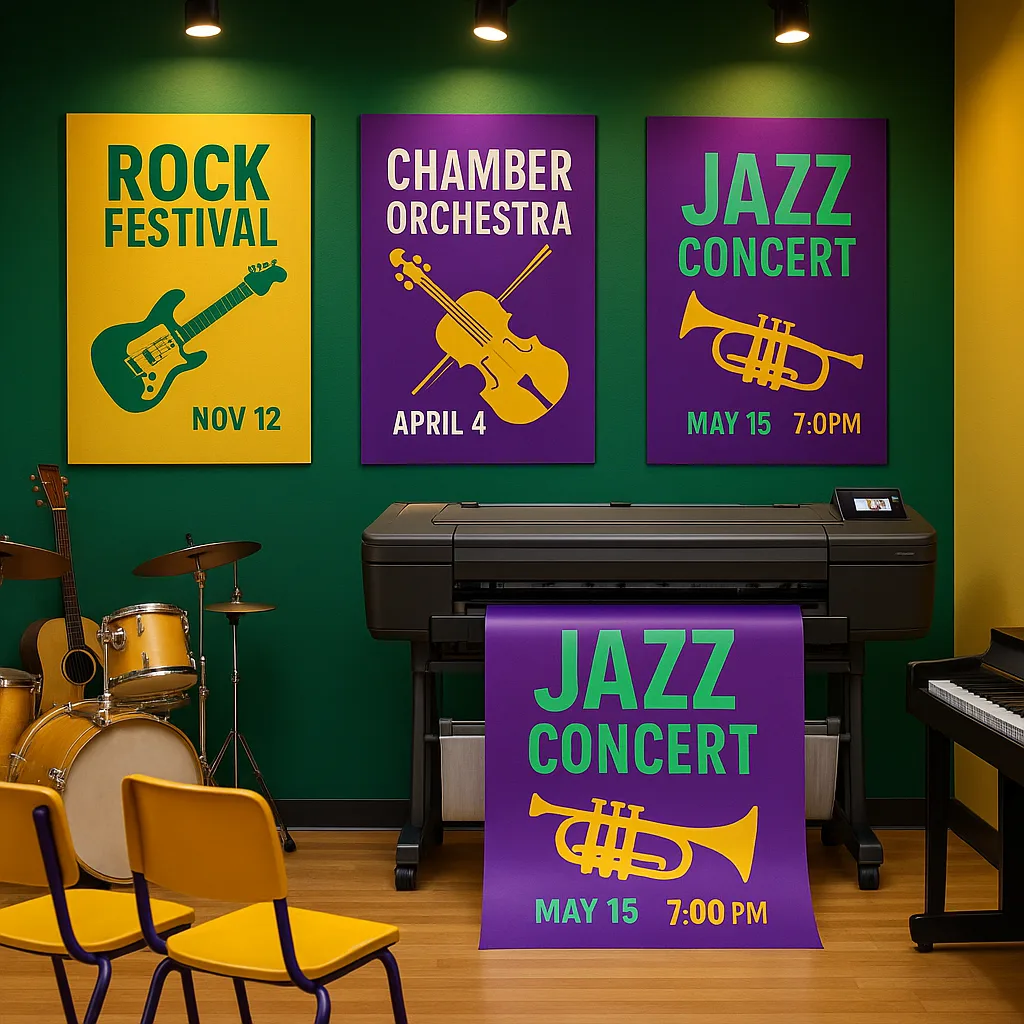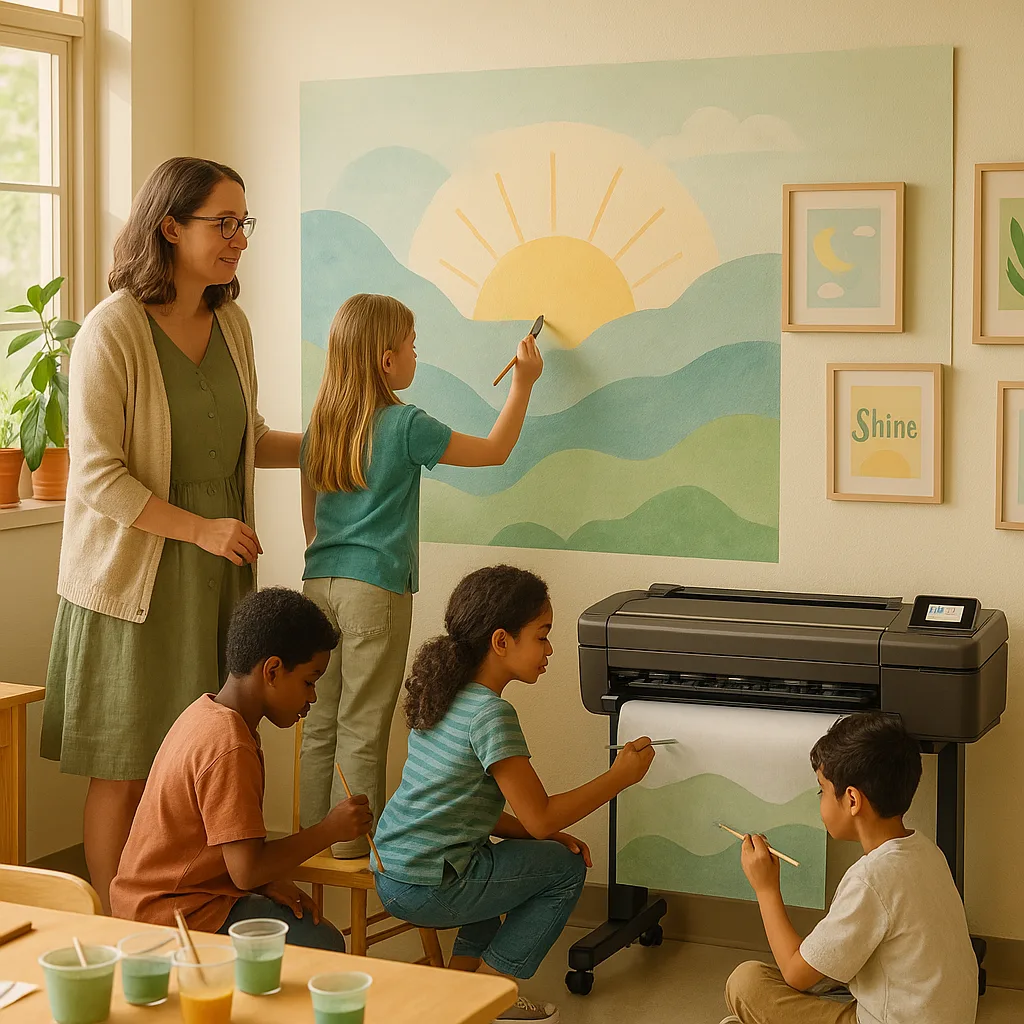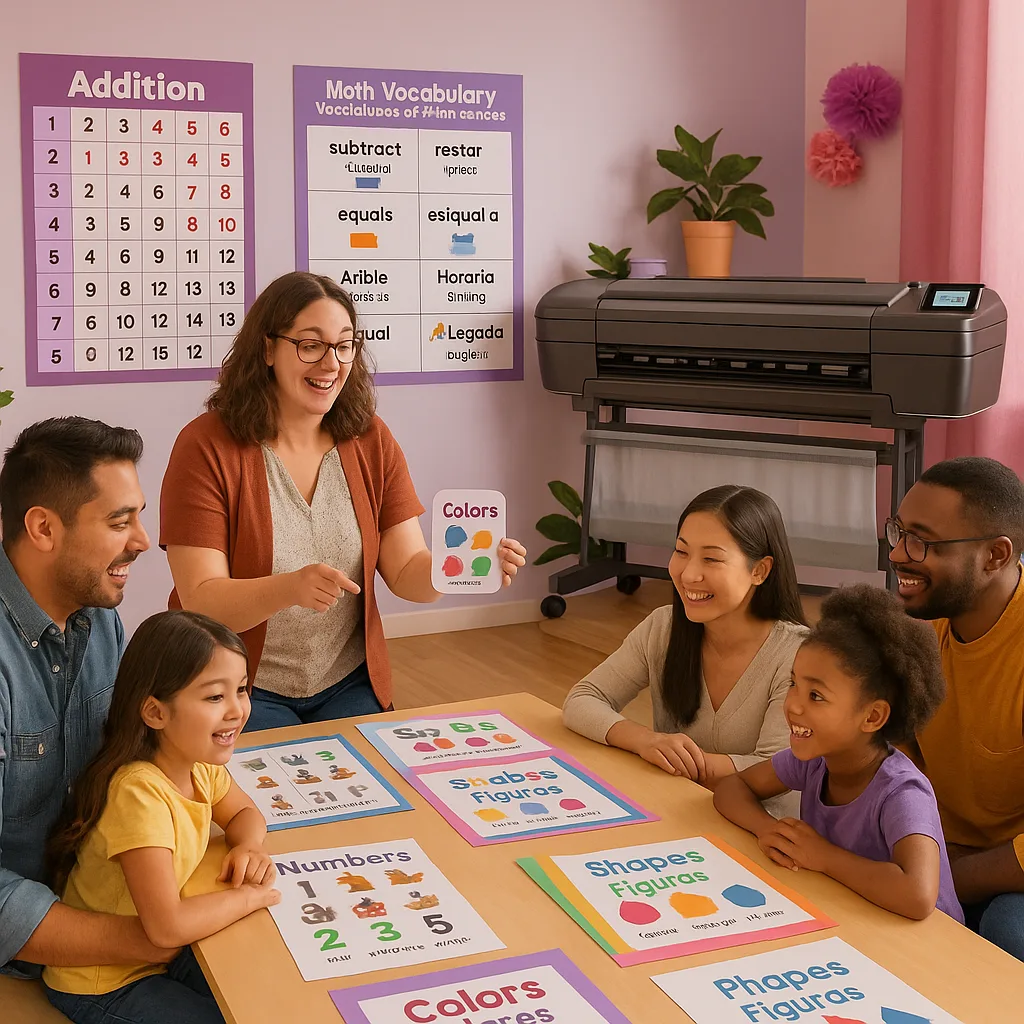
Poster Machine Maker for School Emergency Systems
When Hurricane Ida struck Louisiana in August 2021, East Baton Rouge Parish schools faced an unprecedented challenge: communicating rapidly changing emergency information to 42,000 students across 88 campuses. Their secret weapon? A comprehensive visual communication system powered by poster machine maker emergency communication protocols they had established months before the storm hit.
The Critical Gap in School Emergency Preparedness
According to the National Center for Education Statistics, 96% of public schools conduct lockdown drills. Yet only 31% have visual communication systems that function when power and internet fail. This gap becomes particularly dangerous during extended emergencies when traditional digital displays go dark. Furthermore, the U.S. Department of Education reports that 27% of K-12 students come from homes where English is not the primary language, making multilingual visual communication essential during crisis situations.
Districts that invest in poster maker machines for schools before disasters strike consistently report faster family reunification, reduced student anxiety, and more effective emergency response coordination. The key lies in pre-planning visual systems that remain accessible when other communication channels fail.
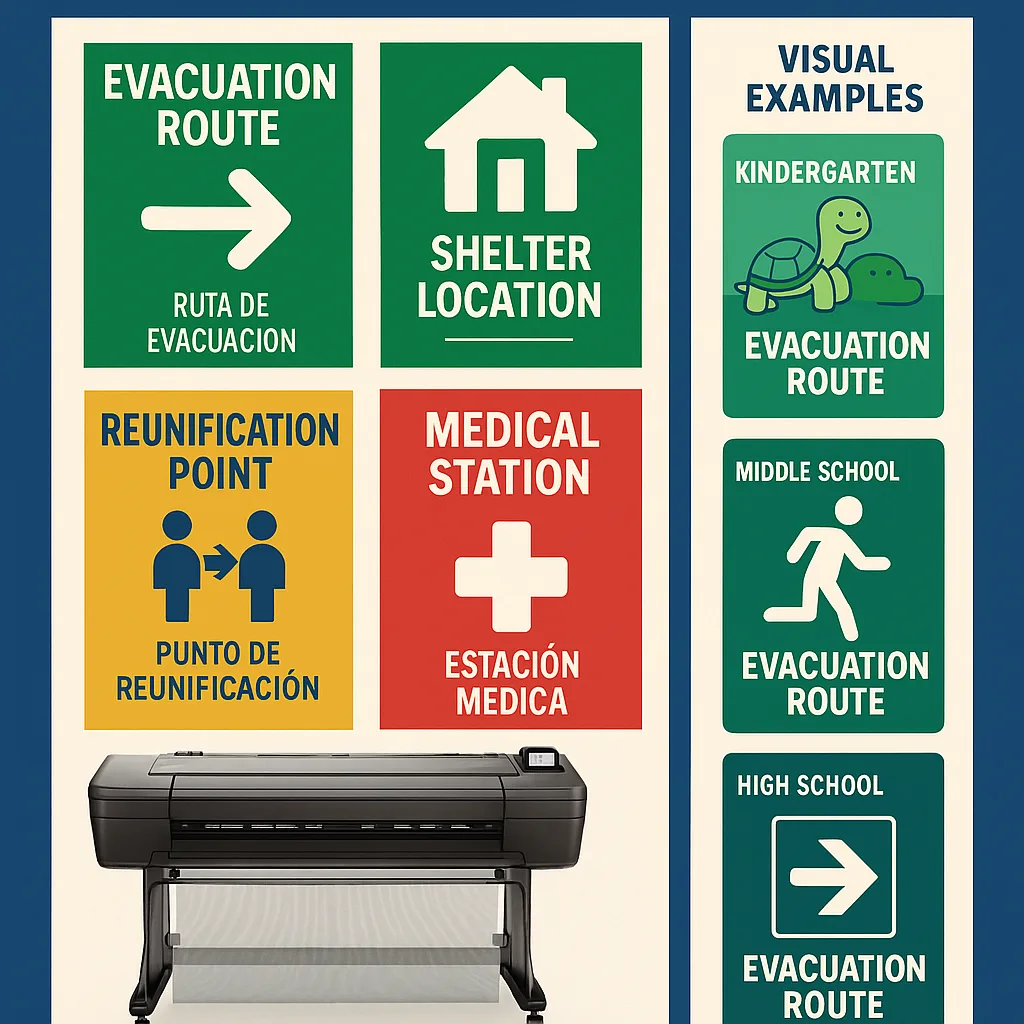
Building Your Poster Machine Maker Emergency Communication Framework
Effective crisis visual communication requires three interconnected components: pre-designed templates, rapid production capabilities, and strategic placement protocols. Let’s examine each element through the lens of districts that successfully navigated recent emergencies.
Pre-Designed Emergency Template Libraries
Cypress-Fairbanks ISD in Texas, serving 117,000 students, maintains a digital library of 200+ emergency poster templates in English, Spanish, Vietnamese, and Arabic. Their visual communications director reports that having these templates ready reduced poster production time from hours to minutes during their 2021 winter storm response. Essential templates include evacuation routes with clear landmarks for young children. They also cover color-coded reunification maps by grade level and shelter-in-place instructions with pictograms that work across all languages.
The district’s Education Studio 36″ Poster Maker produces weather-resistant posters that survived 48 hours of freezing rain, maintaining critical wayfinding information when digital displays failed. Their emergency template categories include severe weather protocols, lockdown procedures with age-appropriate imagery, medical emergency stations, and utility failure responses.
Rapid Production Protocols During Active Emergencies
Speed matters when circumstances change rapidly. Broward County Public Schools in Florida developed a “Code Yellow” visual communication protocol that activates dedicated poster production teams within 10 minutes of any emergency declaration. Their system relies on pre-assigned roles where the communications coordinator selects appropriate templates, the production team operates multiple poster printer machines simultaneously, and runners deliver updated visuals to predetermined posting locations.
During Hurricane Irma, this system enabled them to update evacuation shelter information across 234 schools in under 3 hours as routes changed due to flooding. The district keeps emergency supply caches with over 500 sheets of waterproof poster material and backup ink cartridges for all printer models. They also include battery-powered laminators for outdoor use and pre-cut mounting supplies organized by building zone.
Designing Calming Visual Environments During Crisis
Research published in the Journal of School Psychology indicates that visual environment significantly impacts student stress levels during emergencies. Color psychology becomes critical: soft blues and greens reduce anxiety by 23% compared to red-based warning systems. Successful districts balance the need for clear emergency information with creating reassuring visual environments.
Age-Appropriate Visual Communication Strategies
Elementary schools require different visual approaches than high schools. Plano ISD in Texas uses their Education Flex 30 Poster Printer Cutter Package B to create character-based emergency guides where familiar mascots demonstrate safety procedures. Their “Safety Bear” series reduced reported anxiety among K-2 students by 40% during tornado drills compared to text-based instructions.
For middle and high schools, the district employs infographic-style posters that respect students’ maturity while providing clear, actionable information. These designs incorporate QR codes linking to translated audio instructions, supporting both multilingual families and students with reading difficulties. The visual hierarchy prioritizes immediate actions in large, bold fonts while providing detailed information in smaller text for those seeking comprehensive guidance.
Strategic Placement for Maximum Visibility and Calm
Placement science emerged from post-incident analyses across multiple districts. Effective positioning follows predictable patterns based on traffic flow and stress points. Families first gather at main entrances. Other key spots include cafeterias used for assembly, gymnasiums that can serve as shelters, and hallway intersections where people make decisions.
Height considerations vary by audience: adult eye-level (5-6 feet) for parent information, child eye-level (3-4 feet) for student instructions, and ceiling-mounted (8+ feet) for wayfinding visible above crowds. Districts using professional design services report 60% faster evacuation times due to optimized visual placement strategies.
Multilingual Considerations in Emergency Visual Communication
Federal guidelines require emergency information accessibility for all community members, regardless of language proficiency. Successful multilingual emergency posters follow specific design principles that transcend simple translation. Visual hierarchy places universally understood symbols prominently, limiting text dependency. Color coding remains consistent across all language versions, preventing confusion during transitions between areas.
Wake County Public Schools in North Carolina serves families speaking 140+ languages. Their solution combines pictographic primary instructions with translated details in the five most common languages. Using their Education Express 24″ Poster Maker Package A, they produce poster sets where each language version maintains identical visual layouts, allowing non-English speakers to navigate using visual cues even when their language isn’t represented.
Cultural Sensitivity in Crisis Communication
Beyond translation, cultural considerations impact emergency communication effectiveness. Some cultures interpret direct commands as disrespectful, requiring softer language while maintaining urgency. Others prioritize collective over individual safety, necessitating family-focused messaging. Successful districts engage cultural liaisons during template design, ensuring messages resonate across diverse communities.
The investment in culturally appropriate emergency visuals pays dividends during actual crises. Garden Grove Unified School District in California reports that their Vietnamese-language typhoon preparedness posters, created with community input, achieved 95% compliance with shelter-in-place orders among Vietnamese-speaking families. This compares to just 70% compliance when using generic translated materials.
Update Protocols: Keeping Information Current During Extended Emergencies
Static emergency plans fail during dynamic situations. Effective visual crisis management requires systematic update protocols that maintain information accuracy without creating confusion. Leading districts employ version control systems where each poster displays timestamp and version numbers. Color-coded borders indicate information categories (green for updates, yellow for warnings, red for immediate actions), and QR codes link to real-time digital updates when available.
Montgomery County Public Schools in Maryland refined their update protocols during COVID-19’s extended emergency period. Their “Visual Bulletin” system uses poster maker machines for schools to produce daily update sheets posted at consistent locations and times. Families checked designated “Information Stations” each morning for the latest guidance. This reduced phone inquiries by 70% and kept messaging consistent across all schools.
Technology Integration Without Dependency
While maintaining non-digital communication capabilities, modern emergency systems benefit from selective technology integration. Successful approaches include embedding NFC tags in posters for smartphone updates without QR scanning, using augmented reality markers that overlay current information on static posters, and incorporating sound buttons for audio instructions supporting visually impaired community members.
However, these enhancements never replace core printed materials. During Texas’s 2021 power grid failure, districts with tech-dependent systems struggled while those maintaining robust poster-based communication continued operating effectively. The lesson: technology should enhance, not replace, physical emergency communication systems.
Measuring Emergency Communication Effectiveness
Continuous improvement requires systematic assessment. Leading districts track specific metrics during drills and actual emergencies including time to full campus evacuation, percentage of families reaching correct reunification points, number of emergency hotline calls (indicating unclear visual communication), and post-incident survey results from staff, students, and families.
Data-driven refinements have produced remarkable improvements. After implementing comprehensive visual emergency systems, participating districts report average evacuation times reduced by 4.3 minutes, family reunification accuracy increased to 94% (from 78%), and student-reported anxiety levels during drills decreased by 35%.
Cost-Benefit Analysis of Visual Emergency Systems
Initial investments in poster machine maker emergency communication systems typically range from $15,000-40,000 depending on district size and printer capabilities. However, cost-benefit analyses consistently demonstrate positive returns through reduced liability from faster, safer evacuations, decreased staff time managing emergency communications, lower printing costs compared to outsourcing, and improved community confidence supporting bond measures.
Pflugerville ISD in Texas calculated their visual emergency system investment paid for itself within 18 months through reduced outsourced printing alone. Adding avoided liability and improved emergency response efficiency, they estimate a 400% return on investment over five years.
Implementation Roadmap for Districts
Creating effective poster machine maker emergency communication requires systematic implementation. The proven timeline follows a semester-long deployment where Month 1 focuses on conducting multilingual community needs assessment and establishing emergency communication committee with diverse stakeholders. Month 2 involves designing initial template library with professional input and testing draft materials through tabletop exercises.
Month 3 centers on acquiring and installing appropriate poster printing equipment while training designated staff on rapid production protocols. Month 4 includes conducting full-scale drills using visual systems and refining templates based on drill observations. The final month involves finalizing all protocols and templates while establishing regular review and update schedules.
This measured approach ensures thorough preparation without overwhelming staff or budgets. Districts report that staged implementation also builds community buy-in as stakeholders see systematic progress toward comprehensive emergency preparedness.
Beyond Crisis: Dual-Use Benefits of Emergency Visual Systems
While emergency preparedness justifies investment, poster maker machines for schools serve daily educational needs between crises. The same equipment producing emergency signage creates curriculum support materials, event promotions, and positive behavior reinforcement displays. This dual-use approach maximizes return on investment while keeping equipment operational and staff skills current.
Forward-thinking districts integrate emergency preparedness into regular poster production workflows. For example, evacuation route maps double as geography lessons, emergency assembly point signs incorporate school spirit messaging, and multilingual safety reminders reinforce inclusive community values. This integration ensures emergency systems remain familiar rather than foreign when activation becomes necessary.
Professional Development and Ongoing Support
Successful emergency visual communication depends on trained personnel. Leading vendors provide training on equipment operation under stress. They also cover quick design changes and effective crisis communication. Ongoing support through lifetime design services ensures districts can quickly obtain professional assistance during actual emergencies when in-house staff may be overwhelmed.
Regular drills should include visual communication components, testing both equipment functionality and staff proficiency. Districts that hold quarterly “visual communication drills” produce posters 50% faster during real emergencies. Those that only run annual evacuation exercises are slower.
Conclusion: Proactive Protection Through Visual Preparedness
The districts that successfully navigate emergencies share one common characteristic: they invested in comprehensive visual communication systems before crisis struck. Schools can use poster maker emergency communication protocols to protect students and reassure families. Putting these protocols in place now also helps staff coordinate response efforts when every second matters.
The evidence is clear: visual emergency preparedness saves lives, reduces trauma, and builds resilient school communities. As climate events intensify and safety challenges evolve, the question isn’t whether your district will face emergencies, but whether you’ll have robust visual communication systems ready when they arrive. The time to act is now, before the next crisis tests your preparedness.
For more information about implementing emergency visual communication systems in your district, contact Poster Studio Express at 866-788-7900 to discuss how advanced poster making equipment can enhance your emergency preparedness infrastructure.


